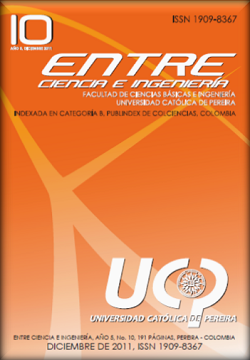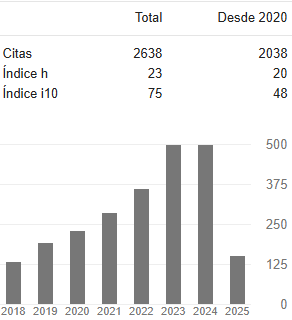Selección dinámica de canal en IEEE 802.15.4 utilizando redes neuronales artificiales.
DOI:
https://doi.org/10.31908/19098367.727Palabras clave:
IEEE 802.15.4, selección dinámica de canal, redes neuronales artificialesResumen
IEEE 802.15.4 es un estándar de comunicación para redes de área personal inalámbrica, opera en las bandas de 800, 900 y 2400 MHz. En la banda de 2400 MHz, asignada para aplicaciones industriales, científicas y médicas, operan otras tecnologías inalámbricas tales como: IEEE 802.11b, 802.15.1, 802.15.3 y 802.16, razón por la cual se espera que los dispositivos IEEE 802.15.4 que operen en proximidad a otros dispositivos inalámbricos, “coexistan”. Es decir, presenten un buen desempeño aún en presencia de cambios e interferencia en el ambiente de radio. Esta condición impone retos a diseñadores e implementadores de dispositivos IEEE 802.15.4, para el establecimiento de mecanismos de operación dinámicos que favorezcan dicha coexistencia. En este sentido, este artículo propone el uso de redes neuronales artificiales para la selección dinámica de canal en IEEE 802.15.4 como mecanismo de coexistencia en la banda de 2400 MHz.
Descargas
Referencias
Chen, B., et al. (2010). “Efficient Error Estimating Coding: Feasibility and Applications”. SIGCOMM’10.
Chowdhury, k., et al. (2005). “DCA –A Distributed Channel Allocation Scheme for Wireless Sensor Networks”. IEEE 16th International Symposium on Personal, Indoor and Mobile Radio Communications.
Gavini, C. (2007). “Quantifying Tradeoffs in the IEEE 802.15.4 Protocol through Simulation”. EE464 Senior Design Project.
Haykin, S. (1999). Neural Networks. A Comprehensive Foundation (2 ed.). Pearson Education.
Hebb D. (1949). The Organization of Behavior: A Neuropsychological Theory. New York: Wiley.
Hoppfield, J. (1982). “Neural Networks and Physical Systems with Emergent Collective Computational Abilities”. En Proceedings of the National Academy of Sciences of the United States of America, tomo 79, pág. 2554-2558.
IEEE (2006). “IEEE 802.15.4, Wireless Medium Access Control (MAC) and Physical Layer (PHY) Specifications for Low-Rate Wireless Personal area Networks (LR-WPANs)”. IEEE Computer Society.
Ko, J. & Mishra, A. (2010). “DynaChannAl: Dynamic Channel Allocation with Minimal End-to-end Delay for Wireless Sensor Networks”. Johns Hopkins University. Baltimore.
Levenberg, K. (1944). “A Method for the Solution of Certain Problems in Least Squares”. Quart. Appl. Math. 2, pág. 164-168.
Marquardt, D. (1963). “An Algorithm for Least Squares Estimation on Nonlinear Parameters”. SIAM J. APPL. MATH. 11, pág. 431- 441.
McCulloch, W. & Pitts, W. (1943). “A Logical Calculus of the Ideas Immanent in Nervous Activity”. Bulletin of Mathematical Biophysics 5, pág. 115-133.
Minsky, M. & Pappert, S. (1969). “Perceptrons: An Introduction to Computational Geometry”. The MIT Press.
Rosenblatt, F. (1962). Principles of Neurodynamics: Perceptrons and the Theory of Brain Mechanisms. Washington DC: Spartan.
Rumelhart, D., Hinton, G. & Williams, R. (1986). Parallel Distributed Processing: Explorations in the Microstructure of Cognition. The MIT Press, Cambridge, MA.
Widrow, B. (1959). “Adaptive Sampled-data Systems – a Statistical Theory of Adaptation”. En IRE WESCON Convention Record, tomo 4, pág. 74-85.
Widrow, B. & Hoff, M. (1960). “Adaptive Switching Circuits”. En IRE WESCON Convention Record, tomo 4, pág. 96-104.
Won, C., et al. (2005). “Adaptive Radio Channel Allocation for Supporting Coexistence of 802.15.4 and 802.11b”. IEEE 62nd Vehicular Technology Conference.
Descargas
Publicado
Número
Sección
Licencia
Derechos de autor 2019 Entre Ciencia e Ingeniería

Esta obra está bajo una licencia internacional Creative Commons Atribución-NoComercial 4.0.



















